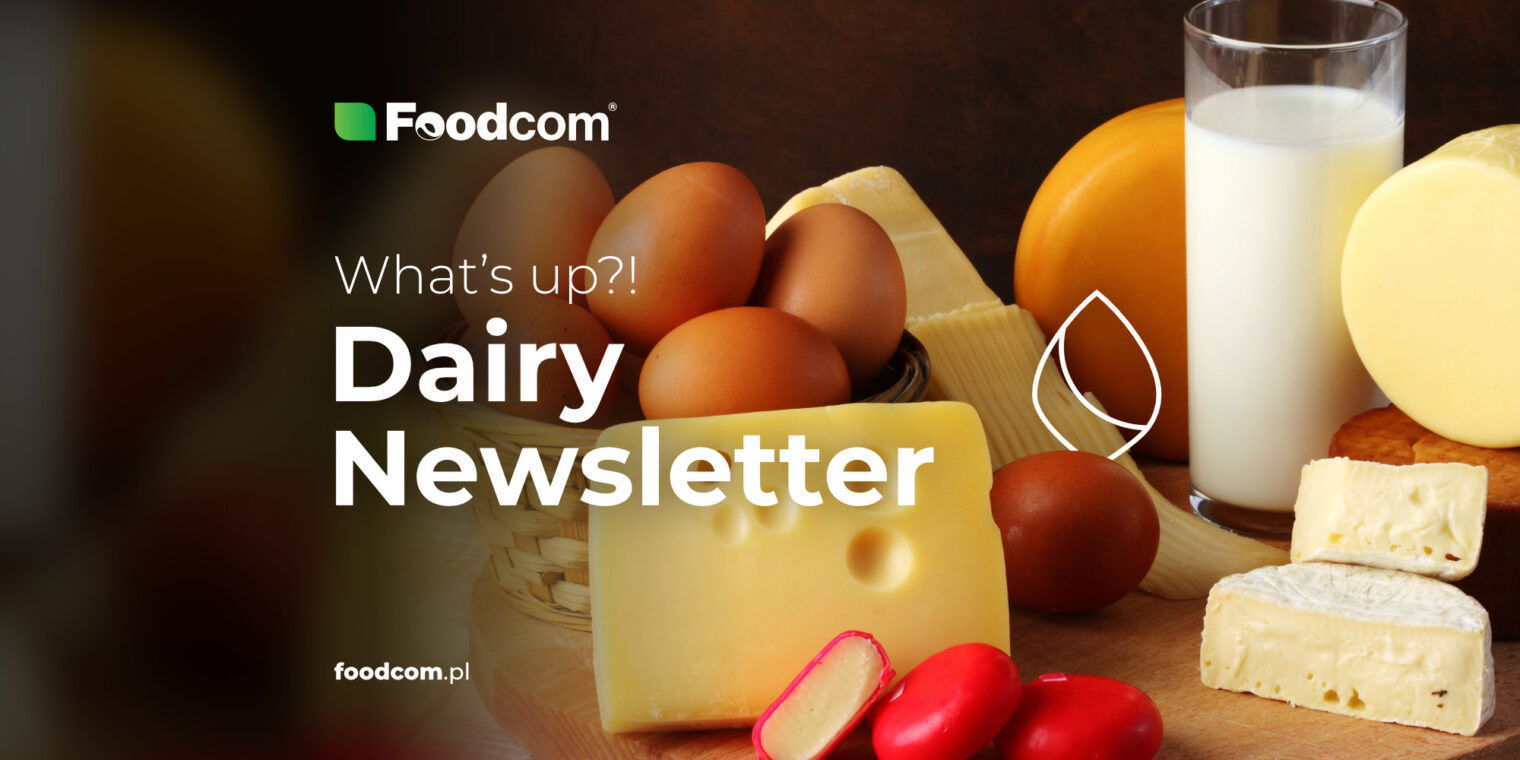Resumen
Índice
This is our summary of the week 3 on the European dairy market divided into 4 main categories.
SMP is building its price very steadily, helped by the ONIL – Algeria tender, which closed at 3.68 – 3.72 EUR/kg CFR. Producers are imposing high (seemingly unattainable) prices in the range of 3.60 – 3.70 EUR/kg EXW EU, but it won’t be long before they find buyers at that price, if they haven’t already. The SMP price is rising and there is no indication that it will drop anytime soon.
FCMP is offered at around 4.35 – 4.40 EUR/kg EXW EU.
Quite a big price increase is seen in SWP, which is offered by producers at 1380 – 1420 EUR/MT EXW EN. A price of 1350 EUR/MT on SWP FEED is already a daily occurrence. Prices of WPC 35/80 and buttermilk after a few weeks of stagnation also went up together with SMP.
Prices depending on the date of collection are between 4.15 – 4.25 EUR/kg EXW EU. Quite a few producers are satisfied with the current prices and closed sales for the coming weeks.
Cheese prices are still high with no reductions in sight. Cheddar cheese price, which have been at the same level for a few weeks, have now gone up. In the past weeks there were fewer takers for the cagliata cheese, which caused the price to drop slightly.
Polish butter has been offered in recent weeks at 5.50 – 5.60 EUR/kg EXW EN. Currently it is hard to find offers below 5.65 EUR/kg EXW although there are not many buyers on the market. EU15 production butter is offered for prompt delivery around 5.78 – 5.80 EUR/kg DAP EU.
The market is short of whey butter and butter for melting. Everyone is waiting for a new tender for German retail butter, wondering what the price and the period for this Contract will be. AMF is offered at 7.35 EUR/kg EXW EU.
Milk volumes across Europe are still lower than expected, which could be another argument for not making any cuts.
Cream has rebounded from last week’s lows by as much as 150 – 200 EUR/MT, which has translated into higher dairy fat prices.
Powders
SMP is building its price very steadily, helped by the ONIL – Algeria tender, which closed at 3.68 – 3.72 EUR/kg CFR. Producers are imposing high (seemingly unattainable) prices in the range of 3.60 – 3.70 EUR/kg EXW EU, but it won’t be long before they find buyers at that price, if they haven’t already. The SMP price is rising and there is no indication that it will drop anytime soon.
FCMP is offered at around 4.35 – 4.40 EUR/kg EXW EU.
Quite a big price increase is seen in SWP, which is offered by producers at 1380 – 1420 EUR/MT EXW EN. A price of 1350 EUR/MT on SWP FEED is already a daily occurrence. Prices of WPC 35/80 and buttermilk after a few weeks of stagnation also went up together with SMP.
Cheese
Prices depending on the date of collection are between 4.15 – 4.25 EUR/kg EXW EU. Quite a few producers are satisfied with the current prices and closed sales for the coming weeks.
Cheese prices are still high with no reductions in sight. Cheddar cheese price, which have been at the same level for a few weeks, have now gone up. In the past weeks there were fewer takers for the cagliata cheese, which caused the price to drop slightly.
Butter
Polish butter has been offered in recent weeks at 5.50 – 5.60 EUR/kg EXW EN. Currently it is hard to find offers below 5.65 EUR/kg EXW although there are not many buyers on the market. EU15 production butter is offered for prompt delivery around 5.78 – 5.80 EUR/kg DAP EU.
The market is short of whey butter and butter for melting. Everyone is waiting for a new tender for German retail butter, wondering what the price and the period for this Contract will be. AMF is offered at 7.35 EUR/kg EXW EU.
Liquids
Milk volumes across Europe are still lower than expected, which could be another argument for not making any cuts.
Cream has rebounded from last week’s lows by as much as 150 – 200 EUR/MT, which has translated into higher dairy fat prices.
Categorías:







